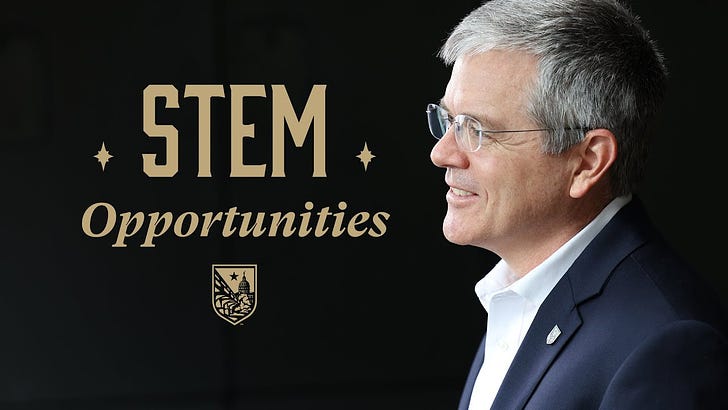Dean David Ruth: The University of Austin Is Building STEM Anew
Dr. David Ruth, Dean of UATX’s Center for Science, Technology, Engineering and Mathematics, details the university’s plan to rebuild STEM education in the heart of Texas.
STEM is core to the University of Austin, the world’s newest university, dedicated to the fearless pursuit of truth.
Science, technology, engineering and mathematics disciplines are distinctively truth-seeking: rigorously systematic, ruthlessly evidence-based, and independent of the observer’s personal preferences. STEM refines and expands our knowledge of the universe through observation, experimentation, and meticulous analysis.
The United States has long been at the forefront of technological advancement. In 2024, UATX is joining this movement by launching a STEM program in Texas uniquely positioned to educate the builders, creators, and innovators of the 21st century and beyond.
Three features will distinguish STEM at UATX:
1. A curriculum grounded in wisdom and motivated by practical application
During the first two years of the UATX student experience, students will take 60% of their coursework in the university’s hallmark Intellectual Foundations Program, an interdisciplinary core curriculum in the humanities, social and behavioral sciences and natural sciences, mathematics, and technology.
First and second-year students will engage with timeless questions and foundational works to cultivate sound judgment and understanding. STEM students will be encouraged to think about “Why?” and “Should?” questions in preparation for the “What?” and “How?” questions they’ll explore in their STEM curriculum to follow. During this period, each student will also lay the groundwork for their Polaris Project, a four-year through-line undertaking to build, create, or discover something serving the human good.
The remaining 40% of the first two years’ schedule allows STEM students to take core and elective classes in science, technology, engineering, and mathematics.
During their junior and senior years, UATX students will have enormous flexibility to pursue their passion for STEM. Each student may concentrate in a predetermined field of study, such as Computing and Data Science, or instead build a more flexible yet cohesive program aligned with their Polaris Project.
2. The best possible student learning environment
UATX STEM classes will be small, typically comprising fewer than 20 students. Learning will be interactive, and professors will teach all sections. No instruction will be contracted out to graduate student teaching assistants. Teaching excellence is the top priority for every faculty member at UATX.
Classrooms will be engaging, high-touch learning environments where professors will actively support students as they stretch to master technical material.
UATX STEM courses will heavily emphasize computation-enabled thinking. Students will focus more on quantitatively modeling complex problems and validating and interpreting analytical solutions and less on mechanics better suited to computers.
3. Unparalleled industry engagement
Too much of today’s scholarship remains locked in the ivory tower. At UATX, our academic centers of learning will be intensely engaged with industry partners helping shape our STEM curriculum to make it more directly applicable to their needs.
Through our innovative Immersive Onsite Learning programs, open to all STEM juniors and seniors and accelerated sophomores, we are partnering with cutting-edge companies to put students on location to engage concurrently in classroom learning and hands-on doing while earning academic credit.
Exciting STEM challenges abound for students to explore: in space technology, advanced computing, the future of energy, biotechnology, and more. At UATX, students will have the opportunity to study and work on these challenges in a way that uniquely engages them with industry leaders and prepares them to join the workforce in these areas.
As we build our programs alongside our students, UATX invites fellow travelers—practitioners, faculty, and industry partners alike—to join us in revitalizing STEM.




